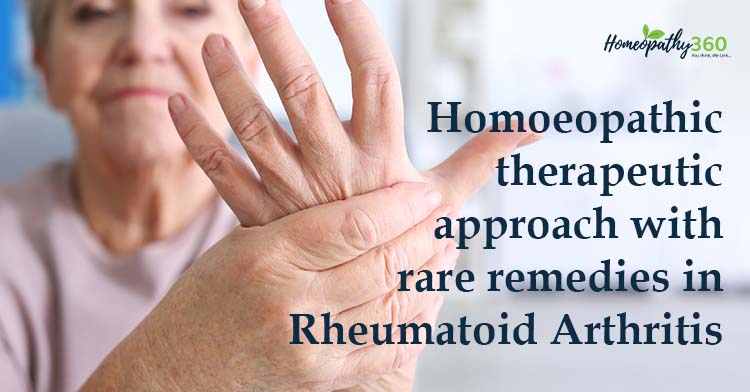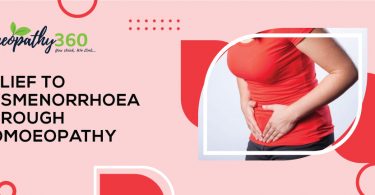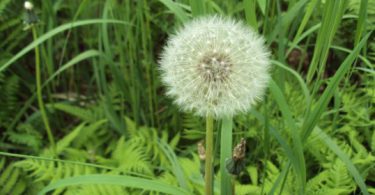
Abstract :
Rheumatoid arthritis is a chronic, inflammatory, autoimmune disease that primarily affects the joints. The RA patient may experience severe disability, joint deterioration, the onset of co-morbidities, decreased quality of life, and premature mortality when it is left uncontrolled. Very often homoeopathic physicians prescribe polychrest drugs based on totality of symptoms. But sometimes it is difficult to find one drug which can cover the totality, due to paucity of characteristic symptom or due to suppression of complaints or due to advance pathological changes. In this situation, one needs to prescribe a drug based on present signs andand symptoms and here rare remedies plays great role in treatment of RA patients. Rare medicines are having very few symptoms but they have much therapeutic value.
Keywords: Homoeopathy, Rheumatoid arthritis, Polychrest, Rare remedies
Abbreviations: rheumatoid arthritis (RA), non- steroidal anti- inflammatory drugs (NSAIDs), disease modifying anti‑rheumatic drugs (DMARDs)
Introduction :
Rheumatoid arthritis is a chronic progressive, disabling, multisystem disease which is characterised by pain, swelling and stiffness of the joints. RA has a worldwide prevalence of approximately 1% among adults[1]. In inflammatory reaction, increased cellularity of synovial tissue and joint damage are the pathological hallmarks of RA. The characteristic feature of rheumatoid arthritis is polyarticular symmetrical pain in small joints of hands and wrists, morning stiffness lasting for over an hour usually involving peripheral joints. Commonly involved joints are the wrists, proximal interphalangeal joints, metacarpophalangeal joints and distal interphalangeal joints. The onset is usually insidious and often accompanied with some generalised features such as weakness, fatigue, malaise, loss of appetite, anxiety, depression, helplessness, and loss of confidence in chronic cases of RA. Signs and symptoms may vary in severity, there may be period of flare up alternating with the period of remission.
Conventional management of rheumatoid arthritis (RA) includes administration of non- steroidal anti- inflammatory drugs (NSAIDs), disease modifying anti‑rheumatic drugs (DMARDs) which has its own adverse effects on excessive consumption.
Gastric ulcers, bleeding and perforation are the most common adverse reactions associated with excessive consumption of NSAIDs. The homoeopathic remedies, on the other hand, improves the general well being, improve the Quality of life in patients along with reducing pain and disability and limits the need of analgesics and DMARDs in RA. Homoeopathic remedies improve the quality of life of patients with RA by reducing intensity of pain, limiting disability and reducing disease activity, thus causing improvement in general and disease condition in particular. Homoeopathic remedy is effective in managing all the symptoms of RA and also plays an important role in preventing relapse of the condition and improving the general health of the patients [2]. Many of the drugs are present in the material medica for RA, which are well proved and commonly called polychrests. Under these many of the rare and less proved drugs remain unused in the vast field of clinical practise. Rare medicines are having very few symptoms but they have much therapeutic value. A probable list of following rare remedies for treatment of rheumatoid arthritis are given below [3,4,5,6,7]:
- ARBUTUS ANDRACHNE: A remedy for eczema associated with gouty and rheumatic symptoms. Arthritis; especially larger joints. Lumbago; symptoms shift from skin to joints.
- AGNUS CASTUS: In rheumatism of hands and feet, swelling of small joints, in those of debauched habits who are prematurely old. Swelling of finger joints, tearing pain, arthritic nodes.
- AMMONIUM BENZOICUM: Pain across the sacrum. Fluid in great toe joint.
- AMMON BROMIDUM: Sensation in right shoulder as if pressed by a weight. Sensation like a cord, causing limping and pain in legs.
- ASARUM EUROPEUM: In any form of rheumatism when there is peculiar sensitiveness to the sound of scratching or even thoughtof it. Severe rheumatic tearing stitches in knee.Stiff neck with thirst in early morning associated with excessive sensibility of all the nerves, great weakness and prostration.
- ASCLEPIAS SYRICATA: Acute articular rheumatism attacking great joints of the body with swelling of the joints when associated with peculiar headache; arthritic pain with swelling of knee joint. Associated symptoms are scanty urine, uraemia.
- ASPARAGUS OFFICINALIS: Rheumatic condition with functional cardiac troubles together with parenchymatous diseases of the kidney; arthritic pains between the scapula, in region of right axilla, on tip of left shoulder.
- DAPHNE ODORA: Rheumatic pain following suppressed gonorrhea. Rheumatic conditions manifesting skin conditions, as well as the bone pain. Rheumatic stiffness in muscles of left thigh above knee. Ball of right great toe swollen and very painful. The pain suddenly shoots into the body and then changes again. Sharp shooting pains first one place then another, constantly shifting.
- DIGITALIS PUPPUREA: Endocardial rheumatism or the effects of rheumatism on the valves of the heart; arthritic nodes in finger joints. Irregular pulse in rheumatic troubles.
- CUBEBA: Acute gonorrheal rheumatism when it attacks the wrist. Acute deep- seated pain in wrists, quickly followed by redness and swelling; stiffness of wrists and thickening around joint.
- ELATERIUM: Sharp shooting pains in left axilla near the intersection of the pectoralis muscle.Painful muscular and neuralgic conditions, especially following scarlet fever or great loss of fluids from excessive diarrhoea.
- FORMICA RUFA: Sudden rheumatic pain darting from side to side. Old chronic conditions with great weakness of mind and body. Rheumatism appearing mostly in joints, with restlessness. Rheumatic pain in right elbow and wrist.
- GLONOINUM: Rheumatic troubles following contusions, especially affecting the back. Rheumatic pains in fingers of left hand.
- GRINDELIA ROBUSTA: Rheumatic troubles of the eye resulting from exposure to cold or metastases from some other parts. Intense pain running directly back to the brain.
- HAMAMELIS VIRGINICA: Rheumatic conditions of the left scapula. Sore pain down cervical vertebra. Concomitant symptoms are passive venous haemorrhage with great weakness.
- HELONIAS : Weak delicate women with muscular rheumatism of the back and hips, when associated with the menstrual and uterine trouble. It has don excellent work in diabetes mellitus when rheumatic symptoms appear.
- HYDRASTIS: Rheumatic troubles, with aching pain constantly shifting from side to side and associated with chronic inflamed liver. Rheumatic pain in elbow, forearm, right shoulder and first finger of left hand.
- INDIGO: Rheumatism of the nerves and joints, accompanied by slight fever and great debility. Indescribable pain extending from the middle of thigh to knee, in bone with impossibility of sitting in a chair.
- INDIUM METALLICUM: Rheumatic drawing across shoulders up to head. Sleepiness, nausea and horribly offensive smell of urine after standing a short time are concomitant symptoms.
- INULA: Stitches and tearing pain in right shoulder and wrist. Spasmodic sticking beneath bend of right knee.
- IODOFORUM: Rheumatism of flexor muscles of legs. Rheumatic pain in both gastrocnemii. Pain along right side of dorsal vertebra.
- IODIUM: In cases of acute septic articular rheumatism it is of great remedy. Chronic articular rheumatism, with the nightly pains but no swelling of joints. Rheumatic stitch like pain in small of back. Great emaciation, great weakness and prostration; ravenous hunger and thirst for large quantities of water.
- JACARANDA CAROBA: Gonorrheal rheumatism; rheumatic pain in right knee, disappearing on motion; rheumatic pain in left arm in morning.
- JACEA: Left upper and right lower limbs are most affected. Stitching pain in the intercostals muscles and about the joints, associated with the milk-crust eruption.
- LACHNANTHES: Stiffness of the neck, head drawn to one side; pain in neck as if dislocated. It is indicated if it is accompanied with the characteristic loquacity.
- MANGANUM: Chronic rheumatism with the anaemia and the wandering, shifting pains going from joint to joint.
- MARUM VARUM: Rheumatic conditions, especially in the bones and joints of arms; drawing and tearing pain with rheumatic lameness of upper arm. Concomitant symptoms are ingrowing toe nails.
- MEPHITIS: Shifting rheumatic pains with urgentdesireto urinate; rheumatic pains in back with frequent passing of clear urine. Rheumatic pains from hips to feet; arthritic pains in heel. Fidgety in legs and arms; rheumatic wandering pains in limbs associated with much pressure and urging to urinate.
- NAJA: Articular rheumatism with severe pain in heart extending to shoulder, neck and arm with intense anxiety. Rheumatic drawing pains in all limbs especially shoulder joints.
- NICOLLUM: Intense cracking in the cervical vertebra. Rheumatic pains from elbows and knees going downward to the hands and feet.
- OLEUM JECORIS ASELLI: Chronic arthritis of ankle joints. Rheumatic pains in elderly people. Erratic pains in joints. Rheumatism of long standing, unable to sit up. Whole body affected but more markedly in lower limbs. Concomitant symptoms are hoarseness, weakness, emaciation, voracious appetite.
- OSMIUM: Pulsating stinging pain inside right shoulder. Drawing pains inside of right forearm. Aching in left metacarpal and phalangeal joint of thumb. Pains in bones and joints of right foot.
- OXALICUM ACIDUM: Articular rheumatism where pains are confined to a small area. Rheumatic pericarditis; endocarditis of rheumatic origin. Arthritic pains in fingers which are flexed.
- PLECTRANTHUS: Sudden shifting of pains and the peculiar one sided sweating. Sweat on right foot and left dry. Drawing tearing pain in joints of upper arms, forearms and fingers, especially right.
- STICTA PULMONARIA: Inflammatory rheumatism with redness. Rheumatic inflammation of right ankle joint, swollen and painful. In rheumatism of joints having large amount of serous fluid, raising the patella.
- STELLARIA MEDIA: It is a useful remedy acting very promptly is cases of rheumatism. The excruciating pain comes on very rapidly with soreness of the part to touch, stiffness of the joints, aggravation of the pain by motion
- STILLINGIA: Large rheumatic node upon the olecranon. Periosteal affections of the malar bones, extending across the face; chronic periosteal rheumatic states, as a result of syphilis or mercurialization.
- STRONTIANA CARBONICA: Rheumatic pains deep in limbs, especially after sprains of either recent or older date. Tearing rheumatic pains in shoulders and arms, especially joints.
- USTILAGO MAYDIS: Rheumatictrouble of metacarpal and metatarsal bones and phlanges; severe rheumatic pains in lumbar region. Rheumatic drawing pains in finger joints, especially second joint of right forefinger associated with hypertrophy or loss of nails.
- VALERIANA OFFICINALIS: In cases ofrheumatic affection of belly of muscle associated with over sensitiveness of all the senses.
- VISCUM ALBUM: It is a great anti-arthritic and anti-rheumatic remedy.Great sensitiveness of limbs with tearing, shooting pains from above downward, with sleeplessness and prostration. It follows well after aconite in acute rheumatism.
- VIOLA ODORATA: It is one of the great remedy for rheumatism of right side.Acute articular rheumatism of the wrist, hands, ankles and feet of the right side with no febrile symptoms.
Conclusion : Rare remedies are less proven medicine and very few symptoms are available, from different sources a cumulative picture of medicine to be prepared and matched with the symptoms of the patient. These remedies are very specific in their action and provides fastest possible recovery. Although rheumatoid arthritis can be effectively managed by homoeopathic rare remedies, sufficient evidence needs to be produced in order to justify the efficacy and superiority of these remedies
References:
- Smolen JS, Aletaha D, Mclnnes LB. Rheumatoid arthritis. The Lancet. 2016 October 22;388(10055):P2023-2038.Available from: https://www.thelancet.com/journals/lancet/article/PIIS0140-6736(16)30173-8/fulltext [Accessed on 05/03/2022]
- Hahnemann S, Organon Of Medicine, 5th andand 6th ed. New Delhi: B. Jain publishers (P) Ltd.; 2016.
- Allen HC, Allen’s Keynote Rearranged andand classified, 10th ed. New Delhi: B. Jain publishers (P) Ltd.; 2013.
- Bhanja KC. The Homoeopathic Prescriber.7th ed. Kolkata: National Homoeo Laboratory; 2012. p. 328-331.
- Lilienthal S. Homoeopathic Therapeutics. Reprint ed. New Delhi: B. Jain Publishers (P) Ltd.; 2011. p.916-930.
- Roberts HA. The Rheumatic Remedies. Reprint ed. New Delhi: B. Jain Publishers (P) Ltd.; 2005. p.12-234.
- Boericke W. Boericke. New Manual of Homoeopathic Materia Medica with Repertory. Third revised andand augmented edition. New Delhi: B. Jain Publishers, (P) Ltd.; 2008. p.79-558.
ABOUT THE AUTHOR:
Dr Anuj Kumar, M.D. (HOM.)
Asst. Professor Department of Physiology
Dr. Halim Homoeopathic medical college andand hospital, Darbhanga ( Bihar)





